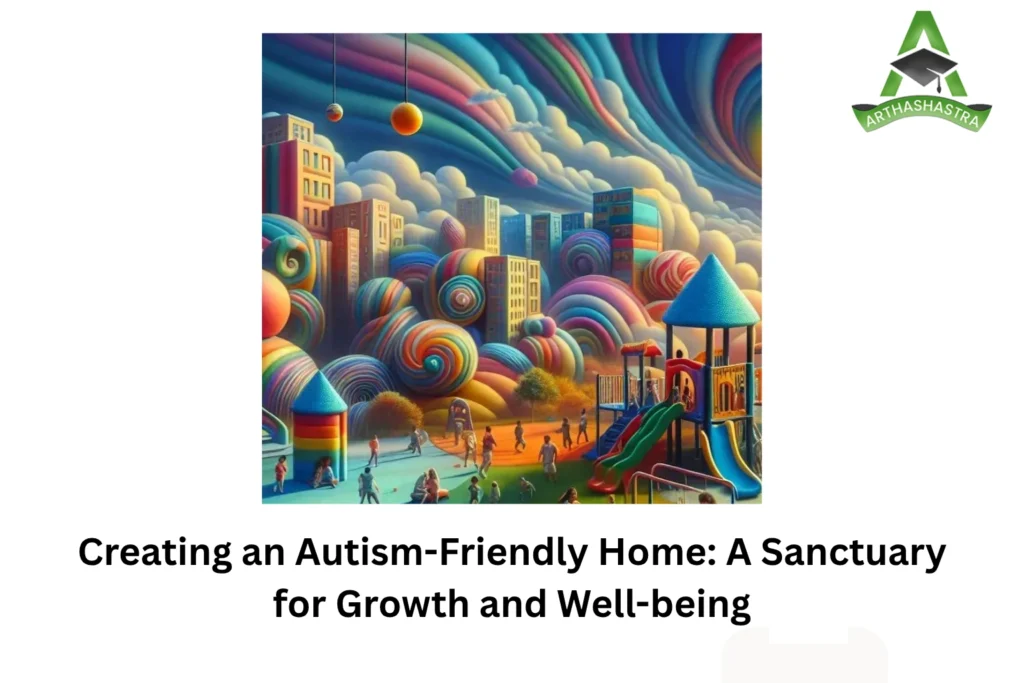For individuals with autism, the home environment plays a pivotal role in their comfort, regulation and overall development. While every person on the spectrum is unique, tailoring your living space to be autism-friendly can significantly reduce sensory overload, promote independence and foster a sense of security. More than just a place to live, an autism-friendly home becomes a sanctuary where individuals can thrive.
Key Principles for an Autism-Friendly Home:
The goal is to create a predictable, calming and stimulating environment, customized to the individual’s specific needs. Here are some key areas to consider:
- Sensory Considerations:
Calming Colors and Lighting: Opt for muted, calming colors like pastels, blues and greens on walls. Avoid bright, jarring colors that can be overstimulating. Where possible, utilize natural light. For artificial lighting, consider dimmer switches, warm-toned bulbs and avoid fluorescent lights which can flicker and hum. Lamps with diffusers can also help soften the light.
Sound Management: Minimize external noise with sound-absorbing materials like thick curtains, rugs and upholstered furniture. Designate a quiet space or “sensory nook” where the individual can retreat when overwhelmed. Consider noise-cancelling headphones as an option for highly sensitive individuals.
Tactile Comfort: Provide a variety of textures in soft furnishings – think weighted blankets, plush rugs and different fabric types for cushions. Some individuals may benefit from tactile toys or sensory bins with different materials.
Odor Neutralization: Be mindful of strong scents from cleaning products, air fresheners or cooking. Opt for unscented or naturally scented alternatives. Ensure good ventilation.
- Structure and Predictability:
Clear Organization: Implement clear and consistent organization systems for toys, clothes and other belongings. Labeling shelves and containers with both words and pictures can be incredibly helpful. Knowing where things belong reduces anxiety and promotes independence.
Visual Schedules and Cues: Utilize visual schedules, social stories and visual timers to help individuals understand routines, transitions and expectations. These tools provide a sense of predictability and reduce uncertainty.
Defined Spaces: Create distinct zones for different activities (e.g., a quiet corner for reading, a play area, a study space). This helps individuals understand the purpose of each area and reduces confusion.
- Safety and Security:
Childproofing (as needed): Extend standard childproofing measures to address specific needs, such as securing furniture to prevent tipping, using safety gates and locking away hazardous materials.
Escape-Proofing (if necessary): For individuals with a tendency to wander, consider additional security measures like door and window alarms or secure fencing for outdoor spaces.
Comforting Personal Spaces: Ensure the individual has a private, comfortable space where they feel safe and can retreat when needed. This could be their bedroom, a sensory tent or a designated “calm down” corner.
- Personalization and Preferences:
Involve the Individual: Whenever possible, involve the autistic individual in the design process. Allow them to choose colors, furniture or decor items for their personal space. This fosters a sense of ownership and empowerment.
Respect Special Interests: Incorporate elements that cater to their special interests. This could be displaying collections, creating a themed room or providing space for their preferred activities.
Flexibility: Remember that needs can change over time. Be prepared to adapt and adjust the environment as the individual grows and develops.
The Profound Benefits of an Autism-Friendly Home:
Creating such a thoughtful environment yields numerous benefits, not just for the individual with autism, but for the entire family:
Reduced Sensory Overload and Anxiety: By minimizing overwhelming sensory input, the home becomes a place of calm, leading to a significant reduction in anxiety, meltdowns, and challenging behaviors.
Improved Regulation and Emotional Well-being: A predictable and comfortable environment helps individuals regulate their emotions more effectively, promoting a greater sense of calm and well-being.
Enhanced Independence and Life Skills: Clear organization and visual cues empower individuals to navigate their home independently, fostering crucial life skills like self-care, tidying and following routines.
Better Sleep Quality: A serene and comfortable bedroom environment, free from sensory disturbances, can significantly improve sleep patterns, which is vital for overall health and development.
Increased Focus and Learning: When an individual feels secure and their sensory needs are met, they are better able to focus, engage in learning and participate in activities.
Stronger Family Connections: A harmonious home environment reduces stress for all family members, allowing for more positive interactions and stronger bonds. When the individual with autism is thriving, the entire family benefits.
Greater Confidence and Self-Esteem: Feeling comfortable and competent in their own home builds confidence and self-esteem, empowering individuals to explore their world with greater ease.
Conclusion:
Creating an autism-friendly home is an investment in the well-being and future of an autistic individual. It’s about designing a space that understands and respects their unique way of perceiving the world, transforming a house into a true sanctuary where they can not only exist but truly flourish. It’s a journey of understanding, adaptation and immense reward.


